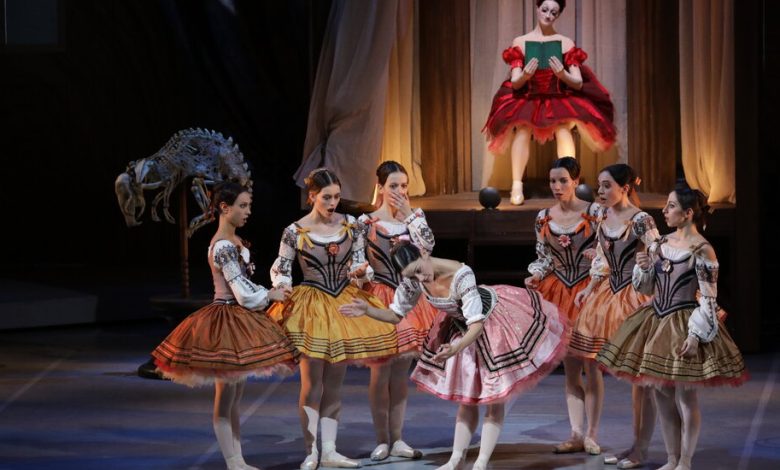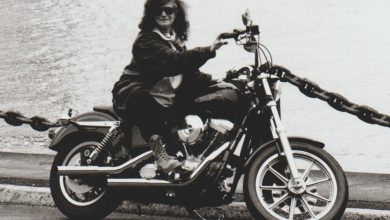Alexei Ratmansky Infuses ‘Coppelia’ With New Life

“Coppelia” is the last, exuberant gasp of 19th-century ballet Romanticism, that moment when the idea of the ballerina as a weightless, ethereal being, poised on the tips of her toes, became central to classical dance.
But the heroine of “Coppelia” isn’t anything like the unattainable sylph of “La Sylphide” or the vaporous Wili of “Giselle.” She isn’t a victim, she doesn’t die. Instead she is a cheerful, sensible village girl who teaches her fiancé the inadequacy of fantasy and the virtues of the real.
In Alexei Ratmansky’s new “Coppelia,” for the La Scala Ballet, the heroine, Swanhilda (Nicoletta Manni), is the driving force of the story, much more clearly than in other productions. She doesn’t pout at her fiancé Franz’s infatuation with the beautiful Coppelia, the enigmatic figure who turns out to be a mechanical doll, created by the eccentric, sinister Dr. Coppelius. She wittily takes charge, determined to confront her mysterious rival and cleverly manipulating the situation after discovering the truth.
Ratmansky, who became artist in residence at New York City Ballet in August, is one of the world’s foremost ballet choreographers. He’s also a serious dance historian, who has staged deeply researched revisions of several 19th-century ballets based on period sources and notation.
He hasn’t done this with “Coppelia.” Instead he has created original choreography while sticking faithfully both to the Léo Delibes score and the original libretto. (“Coppelia” was first choreographed by Arthur Saint-Léon for the Paris Opera Ballet in 1870, but the ballet we know today is largely based on the 1884 version by Marius Petipa.) The effect is similar to seeing his “Swan Lake” or “Giselle” revisions, in which a wealth of detail and nuance suddenly seem alive — as if a carapace of formulaic presentation and interpretation has been cracked open.
In interviews, Ratmansky, who was born in Ukraine and has been fiercely outspoken in his opposition to the Russian invasion, said that when first thinking about the piece, he was struck by the setting of the ballet in Galicia, a region partly in Ukraine. That idea isn’t belabored but is subtly suggested by Jérôme Kaplan’s dark wood sets and lovely embroidered costumes for the villagers.
What’s most notable, given this association, is the production’s joyfulness and energy. It’s genuinely funny; the audience frequently laughed out loud, including at an early moment when Franz (Timofej Andrijashenko) attempts a clumsy cover-up after Swanhilda sees him blowing a kiss to Coppelia.
And when Swanhilda and her friends discover, in Act 2, that Coppelia is a lifeless doll, they shake with laughter. This is one of many moments in Ratmansky’s telling in which emotions and reactions ring true and feel like a departure from the stylized actions of many classics.
Swanhilda is immediately established at the start of the ballet as a life-giving force — she enthusiastically flings open her curtains and waters her plants — but Franz is clearly a slightly dim, if adorable, klutz. Ratmansky gives him more dancing than is usual in traditional versions, and Andrijashenko, a polished technician with a beautiful expansive jump, does a fine and funny job of conveying both irrepressible exuberance and a poor-me-I-am-just-a-man sulkiness.
Ratmansky’s narrative proceeds with more clarity and logic than most “Coppelias” with Swanhilda, Franz and their friends integrated into the village dances and dramatic action. (The actor and writer Guillaume Gallienne is credited as dramaturg. Bravo.) Manni’s Swanhilda is under no illusions about her handsome swain, whom she clearly loves, and she makes it enjoyably obvious that he is in her very bad books. Supported in arabesque at the end of a pas de deux, she pushes him away and balances alone, before running off, leaving Franz stomping with frustration.
The villagers’s ensemble dances, notably a mazurka and a czardas, are earthy and convincing as folk dance, the women throwing themselves sideways into the mens’s arms, hands tucked behind heads, the group performing vigorous stamping jumps without undue prettiness.
Dr. Coppelius (Christian Fagetti) is not the doddering fool of many versions, but bad-tempered and obsessively focused on his mechanical creations. In Act 2, Kaplan makes the interior of his house an atmospheric mad-scientist lair. Huge drawings of skeletons are suspended from high ceilings; disjointed, near-naked dolls line the sides. When the women set them in motion, the dolls move with jerky, convincing limitation. And a special word here for Ludovica di Pasquale as Coppelia, for whom Ratmansky has invented a brilliant, staccato mime sequence that goes far beyond the usual perfunctory puppet-like gestures.
In this act and elsewhere, Ratmansky uses mime and gesture, but more often integrates it into the dance, so that the steps themselves seem to tell the story. Sometimes, as when Coppelius laughs with glee as Coppelia (Manni brilliant as the disguised Swanhilda) seems to come to life, the movement seems a pure embodiment of the music.
The musicality of the choreography is perhaps the most thrilling aspect of this “Coppelia.” Throughout, Ratmansky’s use of dynamic contrast between groundedness and floating jumps, his shifts of rhythmic emphasis, and changes in impetus and momentum, make conventional ballet vocabulary look spontaneous and fresh.
The La Scala dancers look terrific throughout, not least in Act 3, usually depicted as the wedding of Swanhilda and Franz, with what can often feel like a stodgy set of divertissements. Ratmansky sticks to the traditional idea of allegorical dances here but makes them about the young couple’s future. A woman in orange (Linda Giubelli), surrounded by six small children, perhaps shows the joys of maternal love; a man in a Greek tunic (Navrin Turnbull) might represent sensuality and romance; a brigand figure (Rinaldo Venuti) causes fighting to break out among the villagers: discord!
Finally there is peace and resolution in a beautiful pas de deux for the lovers, showing us Franz’s swashbuckling charm and Swanhilda’s generous warmth. Unusually for a climactic moment, it ends modestly, Swanhilda balancing in a low arabesque on Franz’s knee, her arms opening out gently. That modesty seems emblematic of Ratmansky’s enterprise in this “Coppelia.” He hasn’t reinvented or reinterpreted the ballet, but he has infused it with new life.
Coppelia
Through Jan. 13 at La Scala in Milan; teatroallascala.org. Also streaming on medici.tv.



